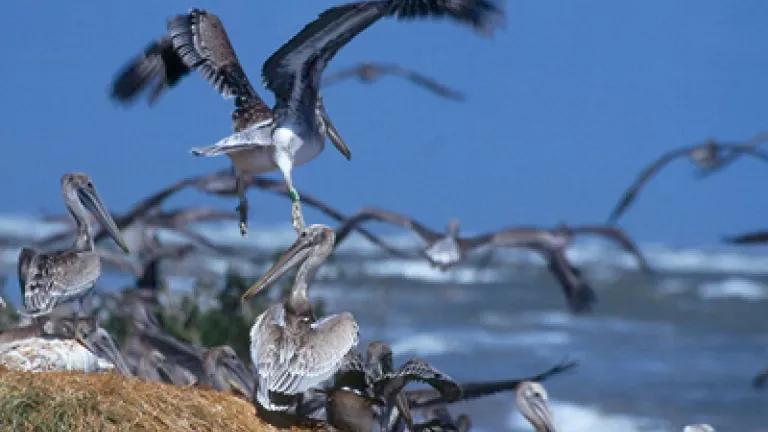
I read a weird news item about the Gulf of Mexico oil spill today. Louisiana’s Department of Wildlife and Fisheries is “considering partnering with the Department of Corrections to train prisoners to help clean birds that may be impacted by the oil.” Am I alone in thinking that this planning represents a fairly stark acknowledgement that the spill is going to be bad news for a lot of birds?
I like to brag that I am a published ornithologist, having been generously listed by a college professor of mine as a co-author on a paper he produced based on Savannah Sparrow data that some other students and I helped collect. But this is not a post by a scientist; for that, you should have a look at the pieces produced by many of my truly qualified colleagues writing on this disaster. Rather, this is a post by someone who, as a three year-old 37 years ago, insisted on being served dinner in a nest constructed of pillows under the table, and on being told that the evening’s meatloaf was in fact birdseed. I am a lifelong and unabashed bird guy, and I am terrified about what’s about to happen to them in the Gulf.
Apparently, one of the places that the spill is likely to hit first is the Breton National Wildlife Refuge, which was established by President Teddy Roosevelt and which today is teeming with all kinds of sea birds, from pelicans to terns to wading birds. (As an aside, can anyone name me something cooler in nature than seeing shorebirds, of many different species, flying at high rates of speed in a flock that blocks the sun, banking and diving together as though they’re physically joined to one another? Absolutely incredible.) NRDC’s team visited there yesterday, and you can immediately notice the incredible number and diversity of birds in just a brief video they posted online.
Wherever this spill goes, it is bad news for the bird species that come in contact with it. Oil-coated feathers are less useful for flying or swimming and are poor buffers against temperature extremes. The oil can be toxic to the critters that birds prey upon, and eating oil-contaminated prey can also cause long-term harm to birds. Also, as my colleague David Pettit recently wrote, the wetlands that serve as the home and breeding ground for numerous birds are particularly susceptible to oil damage and particularly hard to get clean.
And talk about a cleaning challenge – the International Bird Rescue Research Center has an informative, if incredibly dispiriting, summary of what is involved with cleaning a single bird. Speaking as someone who has wrestled with relatively small birds, I promise you it is extraordinarily difficult to take a bird (which – in a panic – will often poop or puke on you), and manipulate it. I can only imagine how hard it will be to adequately clean an oiled bird.
So, the important thing in the coming days and weeks will be to try to minimize the degree to which birds come in contact with the oil. I am sure this will be hard using containment structures like floating booms, especially since birds – you might have heard this – fly.
NRDC and the Cornell Lab of Ornithology have a wonderful website – WeLoveBirds.org -- bringing together birders from all over. The site already has a couple of posts about the spill, and one can post photos and videos online there. For those of us who love birds and are concerned about the spill’s effects on them, I urge anyone with anything to share with the larger birding community to visit there and do so.
(Photo courtesy USFWS.)
